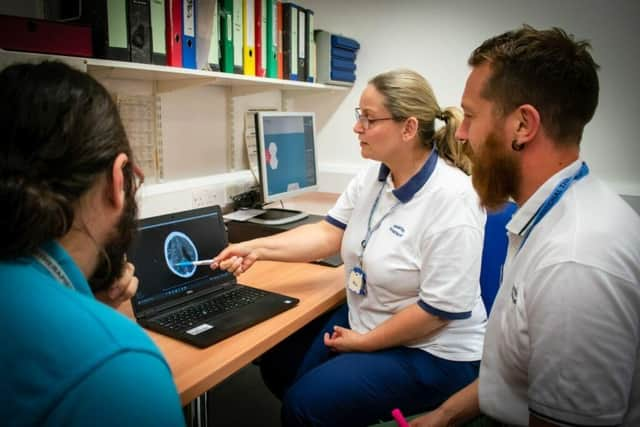Meet the trauma team for East Sussex
and live on Freeview channel 276
Trauma patients are those that have suffered and survived some of the most severe injuries that the NHS treats. They could require serious and often complex surgery in order to live.
Kirsti Bennett-Koster is the clinical lead physiotherapist on the trauma team in East Sussex. The team is made up of a range of experts including rehabilitation consultant therapists, specialist acquired brain injury occupational therapists, and trauma nurse service coordinators. The extreme nature of trauma patients’ injuries can also have a serious psychological impact on them, so the team also works closely with the clinical psychologists attached to the critical care unit.
Advertisement
Hide AdAdvertisement
Hide AdMany of the patients have their initial urgent treatment at the Major Trauma Centre for the region which is based at the Royal Sussex Hospital in Brighton, and then they’re transferred back to Conquest Hospital in Hastings or Eastbourne DGH for ongoing care.


Ms Bennett-Koster said: “These patients have many complex needs. An individual patient may have suffered a brain injury, a spinal injury, have needed abdominal surgery or have needed treatment for broken or even missing limbs. The after trauma team works with our ward teams to coordinate and deliver the wide range of complex care that these patients need to be able to return to their lives.
“We speak to the Major Trauma Centre every week to make sure we are working closely with them, as well as a few days before a patient is transferred back to us. It means that we can make sure that the patient can be admitted smoothly, even when we are busy. That’s really important because of the level of care and support that they need.
“Our aim is to get patients up, get them going and get them home, but that isn’t always straightforward. It’s about helping these patients achieve the best outcome possible for their situation. Many can go back to their lives with comparatively few changes, but that’s often not the case. For some patients, even being able to roll themselves over in bed may now be a challenge – but we’re here to help them help themselves as much as we can.”